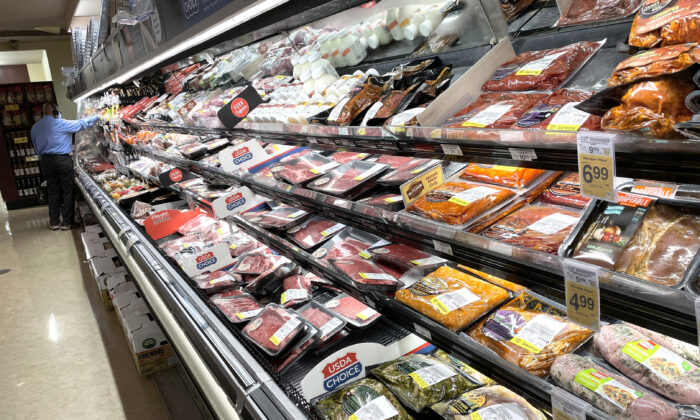By Zoe Han
The rise in the cost of living cooled in July, but not for grocery prices.

The price of food at home rose 1.3% from June to July, marking a 13.1% increase compared to last year. It was the largest price increase for groceries since 1979, according to the U.S. Bureau of Labor Statistics.
The price of consumer goods and services was steady in July from the previous month, as the Labor Department said Wednesday. In July, the inflation rate compared to a year ago was 8.5%, lower than 9.1% in June, a 41-year record, helped by lower prices in energy.
Food, however, rose by 1.1% on the month and 10.9% this year. It was the seventh consecutive month where the price rose by 0.9% and above. Dining out rose by 0.7% in July on the month and 7.6% compared to last year.
Among groceries, egg prices had the biggest increase. Their cost rose by 4.3% in the month of July, and 38% in the year. Potatoes also rose 4.6% on the month and 13.3% year-to-year. Butter was up over 26% on the year in July, and coffee rose by over 20% over the same period.
There was mixed news among other items. The price of beef and veal declined from June to July, part of a three-month downward trajectory. But they too rose 3.4% in July versus last year.
“Both shelter and food costs still rose significantly,” said Rick Rieder, BlackRock’s chief investment officer of global fixed income.
“The persistence of still solid inflation data witnessed today, when combined with last week’s strong labor market data, and perhaps especially the still solid wage gains, places Fed policymakers firmly on the path toward the continuation of aggressive tightening.
Core CPI, excluding food and energy prices, rose by 5.9% on the year in July and just 0.3% in the month.
“The true trend of what is happening with inflation can be found in the core CPI reading that excludes the volatile food and energy components,” said Greg McBride, chief financial analyst at personal-finance site Bankrate. “The core CPI is still up nearly 6% in the past year.”
The Consumer Price Index was positive news for the economy, said Kayla Bruun, economic analyst at global intelligence company Morning Consult. But the war in Ukraine, and other pandemic-related supply-chain disruptions continued to impact food prices, she said.
But an overall fall in commodity prices should filter through to food prices over the coming months, she added. Currently, however, the increase in grocery prices will continue to put pressure on household budgets.
McBride agrees. “Consumers are getting a break at the gas pump, but not at the grocery store,” he said.

